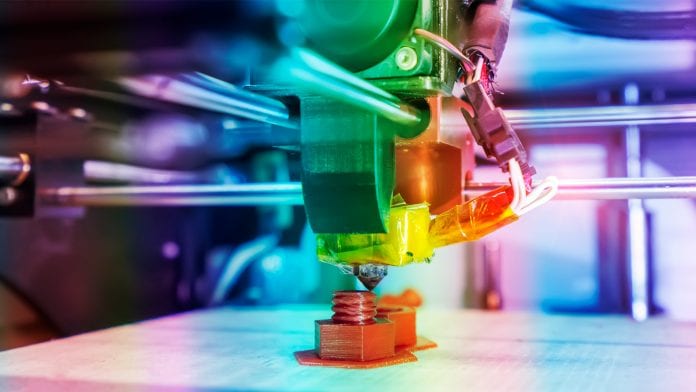
A group of researchers have made a world-first discovery that can be used for biomedical applications.
Delivering cancer drugs more efficiently and tissue engineering are only two of many of the potential applications a new 4D printing technique might have, thanks to the pioneering work of a research collaboration between UNSW Sydney and The University of Auckland.
The researchers have revealed the successful merging of 3D/4D printing and photo-controlled/living polymerisation – a chemical process to create polymers – in a paper published in Angewandte Chemie International Edition.
3D printing produces ‘living’ 4D material
4D printing is a subset of 3D printing, where the printed object can transform its shape in response to certain conditions.
The new controlled polymerisation method, where the researchers harnessed the power of visible light to create an environmentally friendly ’living’ plastic or polymer, opens a new world of possibilities for the manufacture of advanced solid materials and biomaterials.
Polymers can be synthetic, such as plastic, as well as biological, for example, DNA, and such polymers can be reactivated for further growth, unlike traditional polymers which are ’dead‘ after being made.
Since this development, the technology has expanded and has proven useful for making well-controlled molecules for many applications, including drug delivery and other biomaterials.
World-first discovery
Lead author Cyrille Boyer said his team’s latest breakthrough was a world-first in the development of a new 3D printing system using PET-RAFT polymerisation, to allow 3D printed materials to be easily modified after printing.
Professor Boyer said: “Controlled polymerisation has never been used in 3D and 4D printing before.
“In contrast to conventional 3D printing, our new method of using visible light allows us to control the architecture of the polymers and tune the mechanical properties of the materials prepared by our process.
“This new process also gives us access to the 4D printing technique and allows the material to be transformed or functionalised, which was not previously possible.”
Co-first author Dr Corrigan said: “This 4D printing technique is a subset of 3D printing, but with 4D printing, the 3D-printed object can change its shape and chemical or physical properties and adapt to its environment.
“In our work, the 3D-printed material could reversibly change its shape when it was exposed to water and then dried. For example, the 3D object starts as a flat plane and when exposed to certain conditions, it will start to fold – that’s a 4D material. So, the fourth dimension is time.”
Biomedical applications
Professor Boyer said the new method had a multitude of applications for everyday items – particularly if a deformed or broken object needed to be repaired or modified – meaning a main application of this technique is recycling.
However, a major benefit of the new process was its compatibility with biomedicine, because extreme conditions were unnecessary.
Dr Corrigan said: “Current 3D printing approaches are typically limited by the harsh conditions required, such as strong UV light and toxic chemicals, which limits their use in making biomaterials.
“However, with the application of PET-RAFT polymerisation to 3D printing, we can produce long polymer molecules using visible light rather than heat, which is the typical polymerisation method.
“Using heat above 40 degrees kills cells, but for visible light polymerisation we can use room temperature, so the viability of the cells is much higher.”
Professor Boyer said objects made through this new process could more easily be used in advanced bio-applications, such as tissue engineering, for example, where a tissue structure is used to form new, viable tissue for medical purposes.
“Our new method targets small scale, niche applications in fields like microelectronics and biomedicine – a huge area for us – that require very advanced polymers,” he said.









